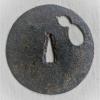Tai, please sign all your posts with at least your real first name plus an initial, which is the rule here. Your upper NAKAGO photos are upside-down and difficult to read. What I think I can read without books is: KAWA XX HACHIRO FUJIWARA MASA (HIDE). The HIDE is a probabilty, but not safe as the NAKAGO was shortened a bit (SURIAGE). Even if it was a MASAHIDE, it is not necessary SUISHINSHI MASAHIDE, and as there are a lot of faked signatures of this one, it might be more desirable to have a true but lesser famous smith than a falsely signed one. My advice: Take your time to identify the smith, see a real NIHONTO expert for that and get information about care and maintenance. Then go ahead to restoration by Japanese experts (not your scissors-grinder from the corner), if the sword is worth it and if your budget allows.



